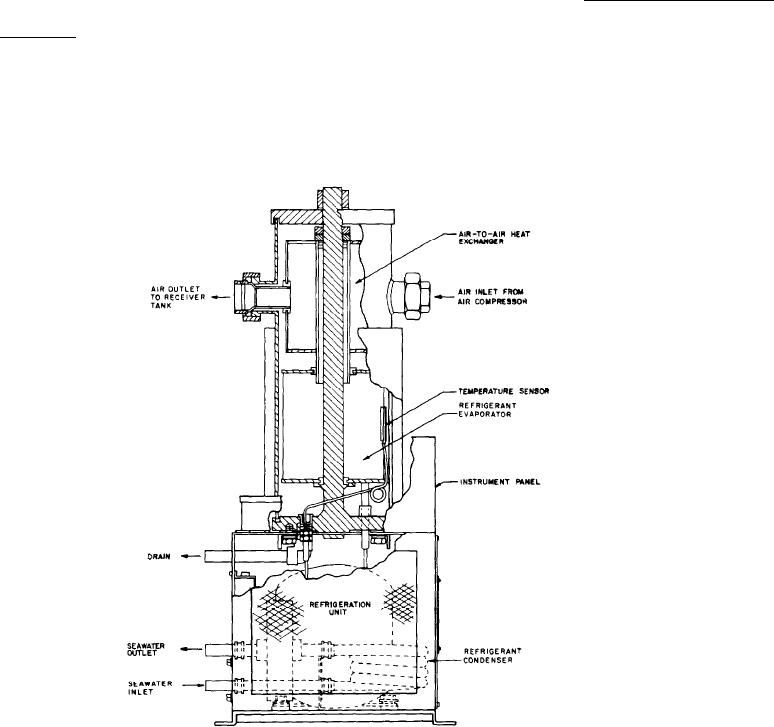
warm air entering the dehydrator. The heating of
in figure 7-27 is a REFRIGERATION DE-
the air serves to reduce thermal shock as the air
H Y D R A T O R or REFRIGERATED AIR
enters the system. The exiting dry air flows into
DRYER. This unit removes water vapor entrained
the receiver for availability to the ship's air system.
in the stream of compressed air by causing the
water to condense into a liquid that is heavier than
air. Air flowing from the separator/holding tank
DESICCANT AIR DEHYDRATOR
first passes through the air-to-air heat exchanger,
(TYPE II)
where some of the heat of compression is removed
from the airstream. The air then moves through
Desiccant is a drying agent. More practically,
the evaporator section of the dehydrator, where
desiccant is a substance with a high capacity
the air is chilled by circulating refrigerant. In this
to remove (adsorb) water or moisture. It also has
unit, the airstream is cooled to a temperature that
a high capacity to give off that moisture so the
is below the dew point. This will cause the water
desiccant can be reused. DESICCANT-TYPE
vapor in the air to condense so it can be removed
DEHYDRATORS are basically composed of
by the condensate drain system. After leaving the
cylindrical flasks filled with desiccant.
evaporator section, the dehydrated air moves
upward through the cold air side of the air-to-air
Compressed air system dehydrators use a pair
heat exchanger. In the air-to-air heat exchanger,
of desiccant towers. One tower is in service
the dehydrated air is raised in temperature by the
Figure 7-27.--Dehydrator (type I).
7-26

